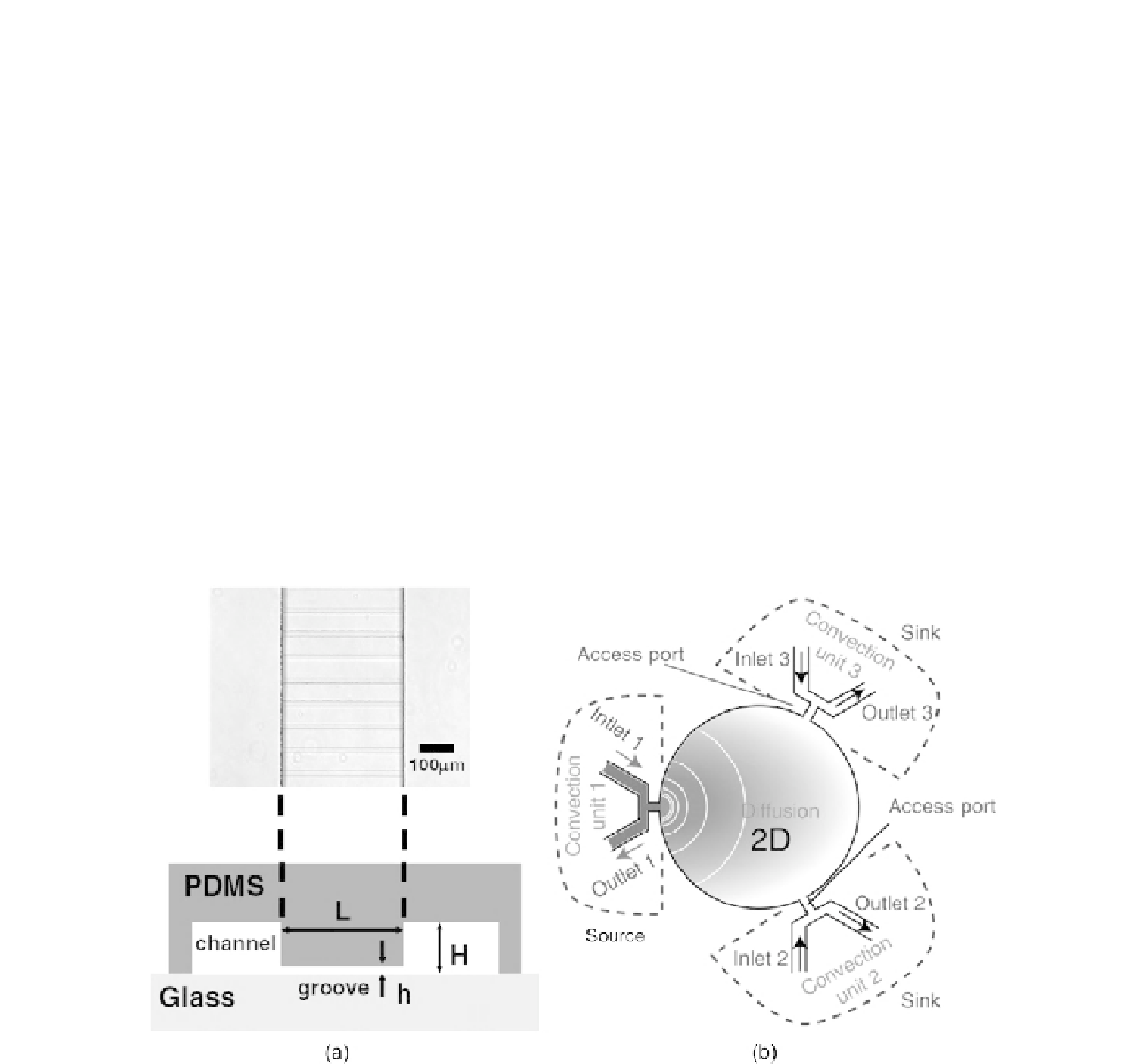Biomedical Engineering Reference
In-Depth Information
5.6.2
Free-diffusion gradient generator
Free-diffusion gradient generator forms the concentration field in a no-flow environment such as
microchannels with high fluidic resistance, porous membranes, or hydrogel. The concentration
gradient is formed by diffusion of the molecules between a source and a sink. Because of the slow
molecular diffusion process, free-diffusion gradient generators need a longer time to establish the
concentration field as compared to parallel lamination gradient generator.
Saadi et al.
[36]
formed a one-dimensional concentration gradient in a ladder-like microchannel
network. The source and sinks are two parallel microchannels, which are connected by an array of
microchannels with a much smaller depth (
Fig. 5.22
(a)). The high fluidic resistance of the micro-
channel array prevents the fluid to flow from the source to the sink and allows the gradient to build up
based on pure molecular diffusion. This gradient generator was successfully used for neutrophil
chemotaxis. Atencia et al.
[37]
developed a two-dimensional concentration gradient in a circular
chamber with three access ports working as sources and sinks (
Fig. 5.22
(b)). Switching the sources and
sinks allow the formation of a dynamic concentration field. A time of about 15 minutes is needed to
establish the concentration gradient in the chamber with a diameter of 1.5 mm.
Diao et al.
[38]
established the concentration gradient across a channel with porous nitrocellulose
membrane as side walls. Parallel microchannels work as the source and the sink. The disadvantage
of free-diffusion gradient generator is the fixed shape of the concentration distribution, which is
determined by the geometry of the gradient chamber and the boundary condition given by the sources
FIGURE 5.22
Free-diffusion gradient generator: (a) one-dimensional and (b) two-dimensional.
(Reprinted with permission from
[36]
and
[37]
.)




Search WWH ::

Custom Search